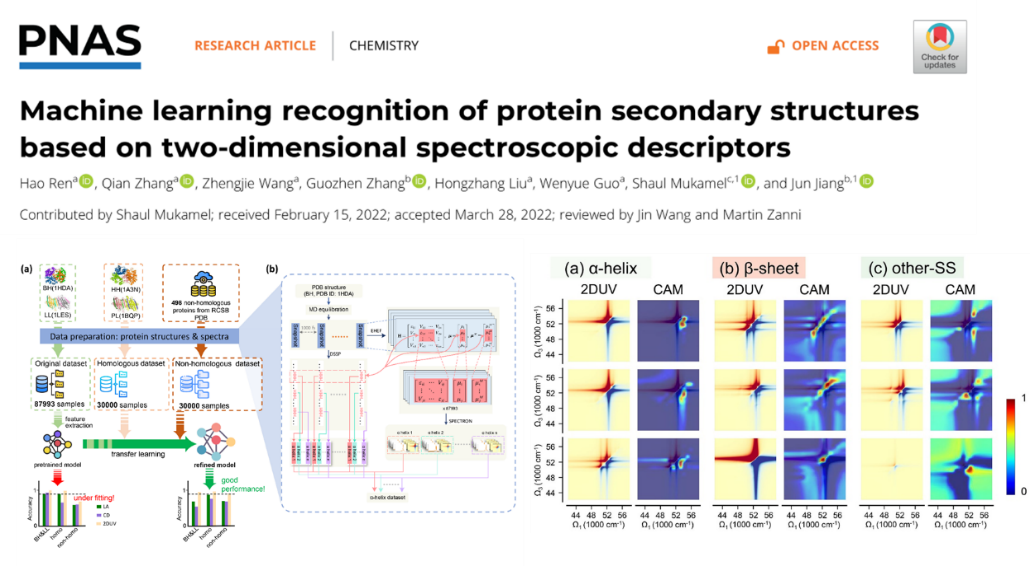
Recently, the National Natural Science Foundation of China (NSFC) reported the new research progress of Prof. Guo Wenyue's team from China University of Petroleum (East China) in artificial intelligence recognition of protein secondary structure as a landmark funding achievement on the website of NSFC.
The research was carried out by Prof. Guo Wenyue’s team from School of Materials Science and Engineering, in collaboration with Prof. Jiang Jun from University of Science and Technology of China and Prof. Shaul Mukamel from University of California, Irvine, USA. It has developed a scheme for intelligent recognition of protein secondary structure based on 2DUV spectral signals. And the achievement was published online in Proc. Natl. Acda. Sci. U.S.A. 2022, e2202713119. Ren Hao, the associate professor in School of Materials Science and Engineering, was the first author of the paper, and China University of Petroleum (East China) was the first author affiliation.
The research findings have showed that the automatic spectral signal interpretation can be realized by treating spectral signal as frequency domain sequence combining with mature pattern recognition technology, which has provided solid theoretical and technical support for the real-time dynamic characterization of molecular structures. By enabling traditional multi-scale simulation, artificial intelligence technology will significantly improve the dynamic tracking capability of spectroscopy for microstructure and functional evolution.
The team led by Prof. Guo Wenyue has combined first-principles calculation, multi-scale simulation methods and machine learning techniques, developed a series of new theoretical calculation methods and utility software in molecular spectrum characterization, rational design of energy materials, growth mechanism of nanomaterials and material genetic methodology, and provided important theoretical tools and data supports for the experimental and applied research in efficient auxiliary material science.
Link: https://www.pnas.org/doi/10.1073/pnas.2202713119
Translated: Jiang Shaofei
Reviewed: Xu Xiaoyan
Updated:2022-06-07